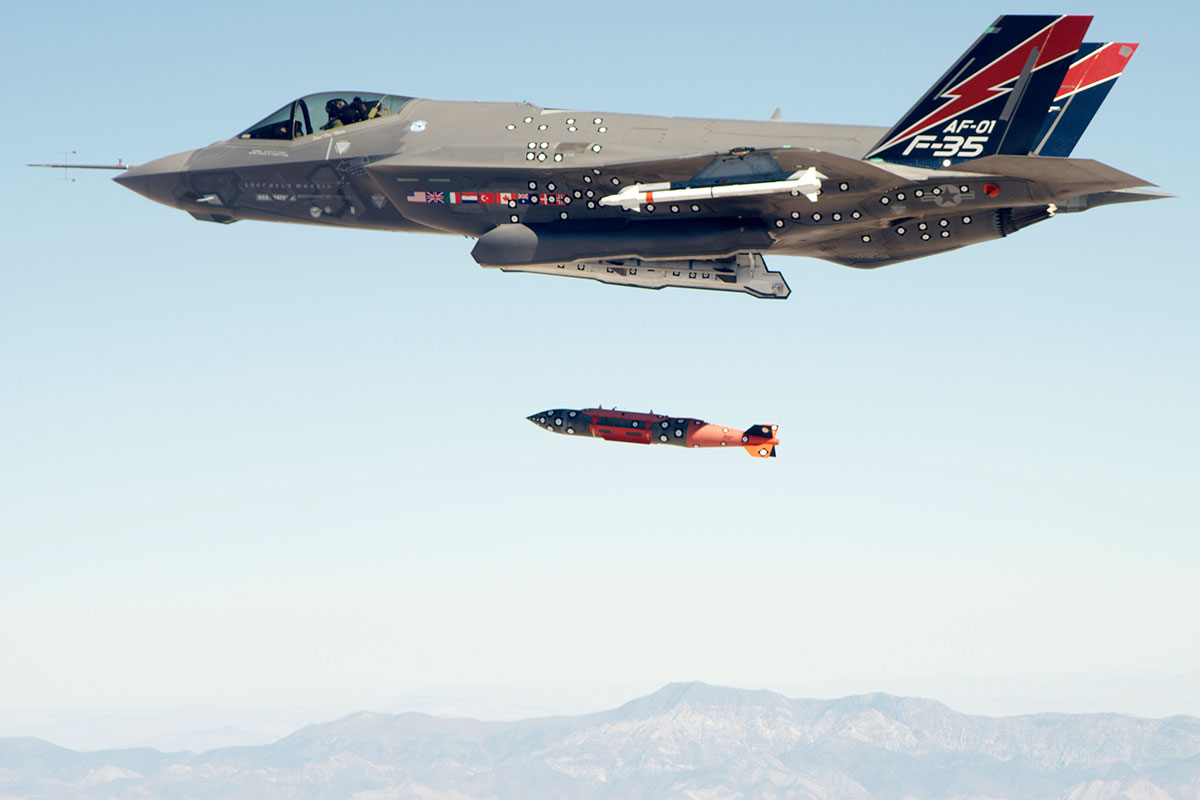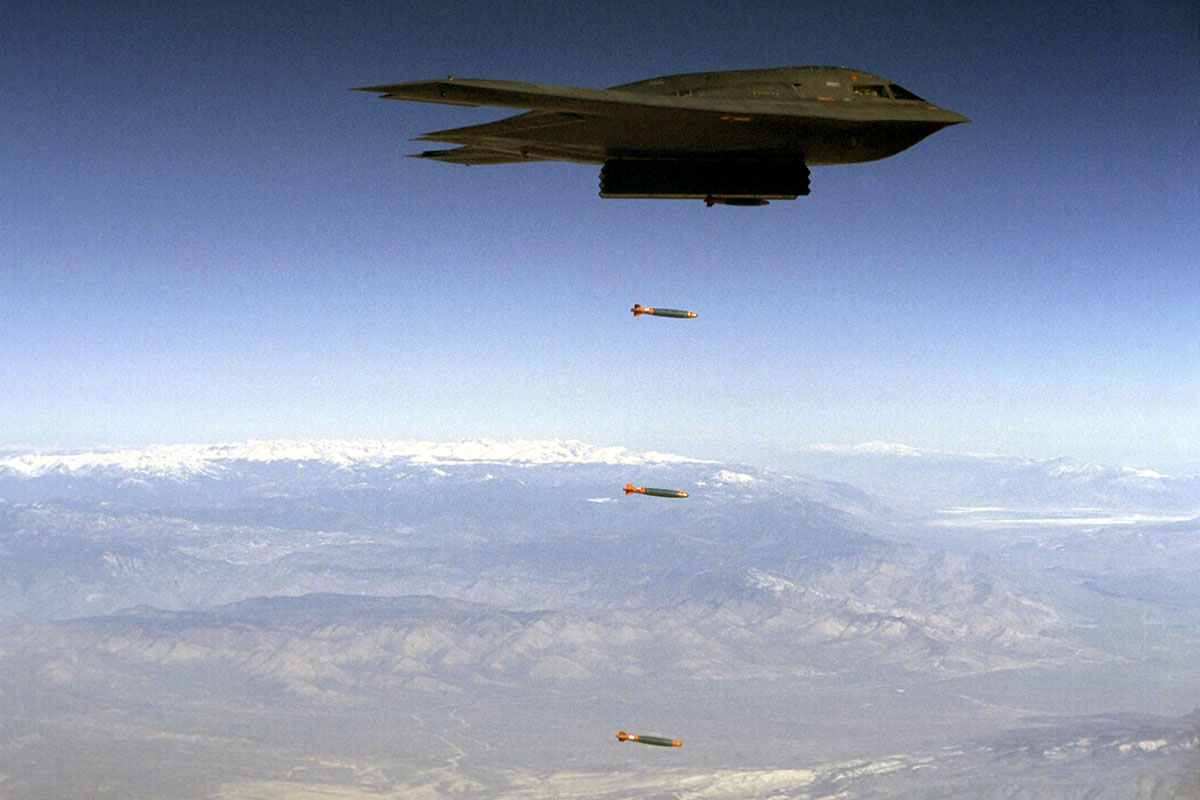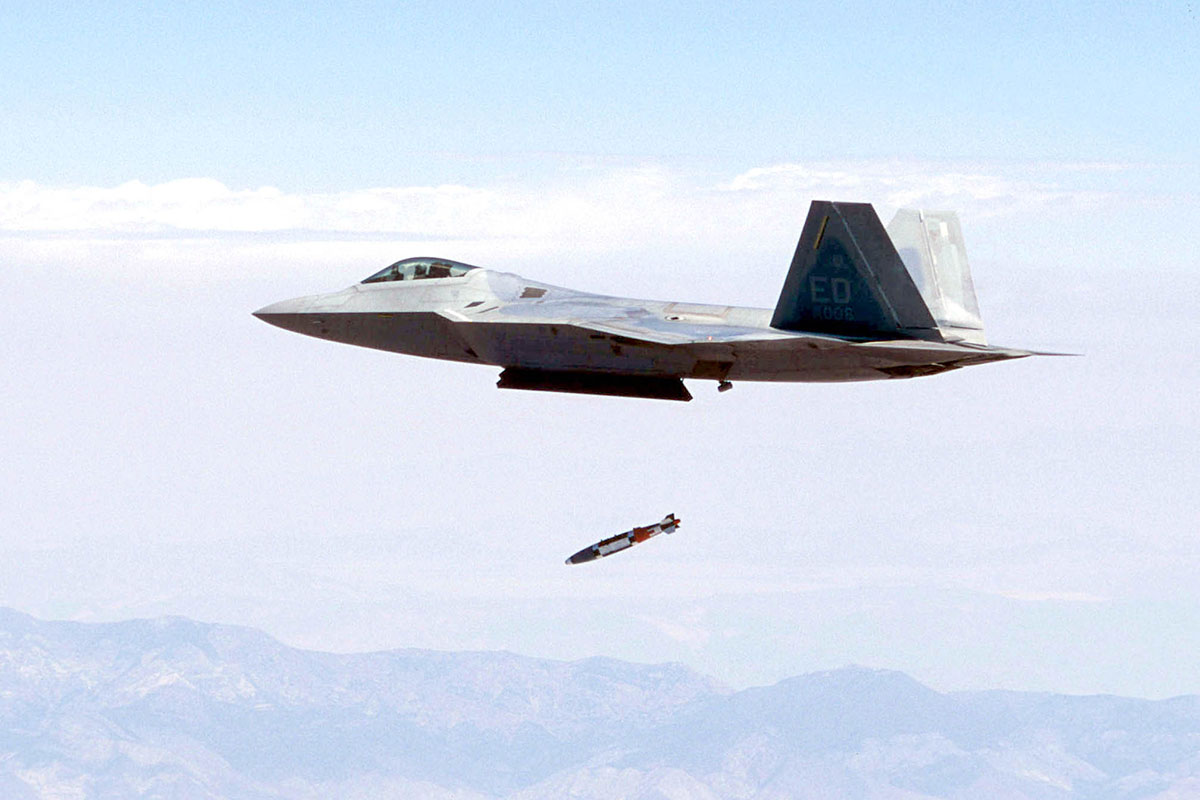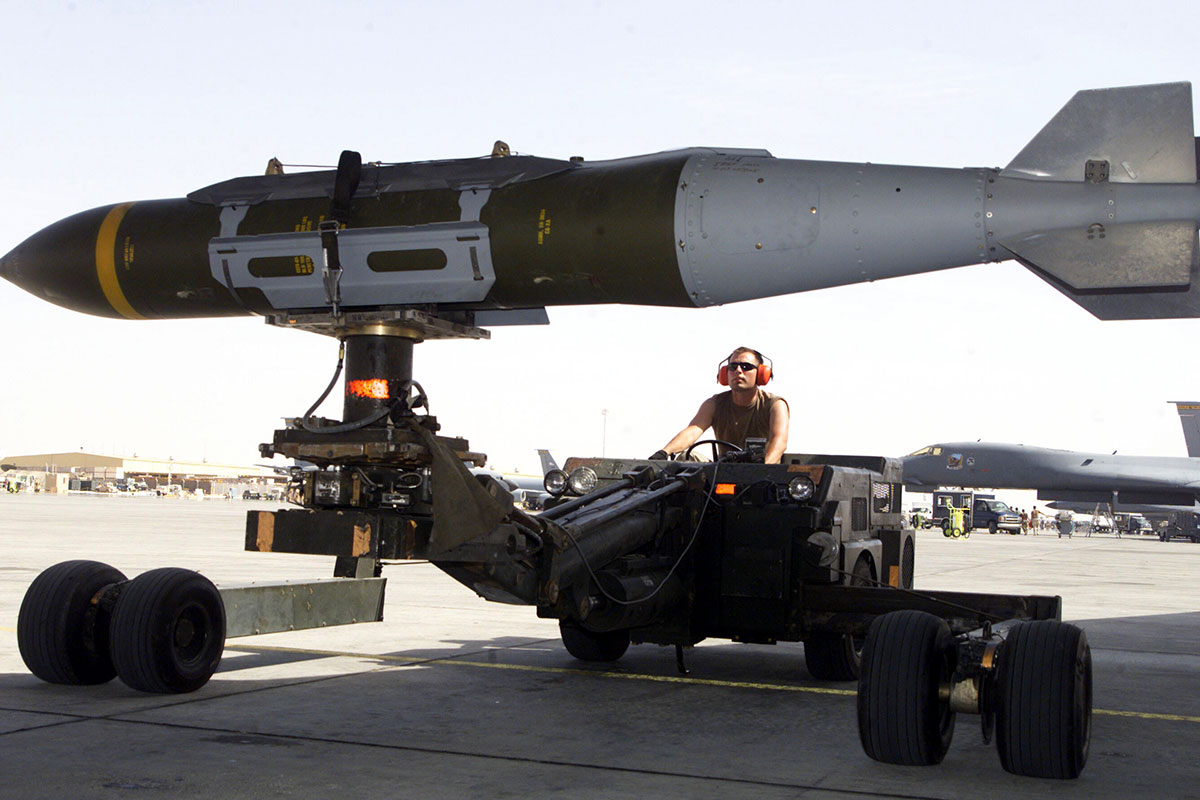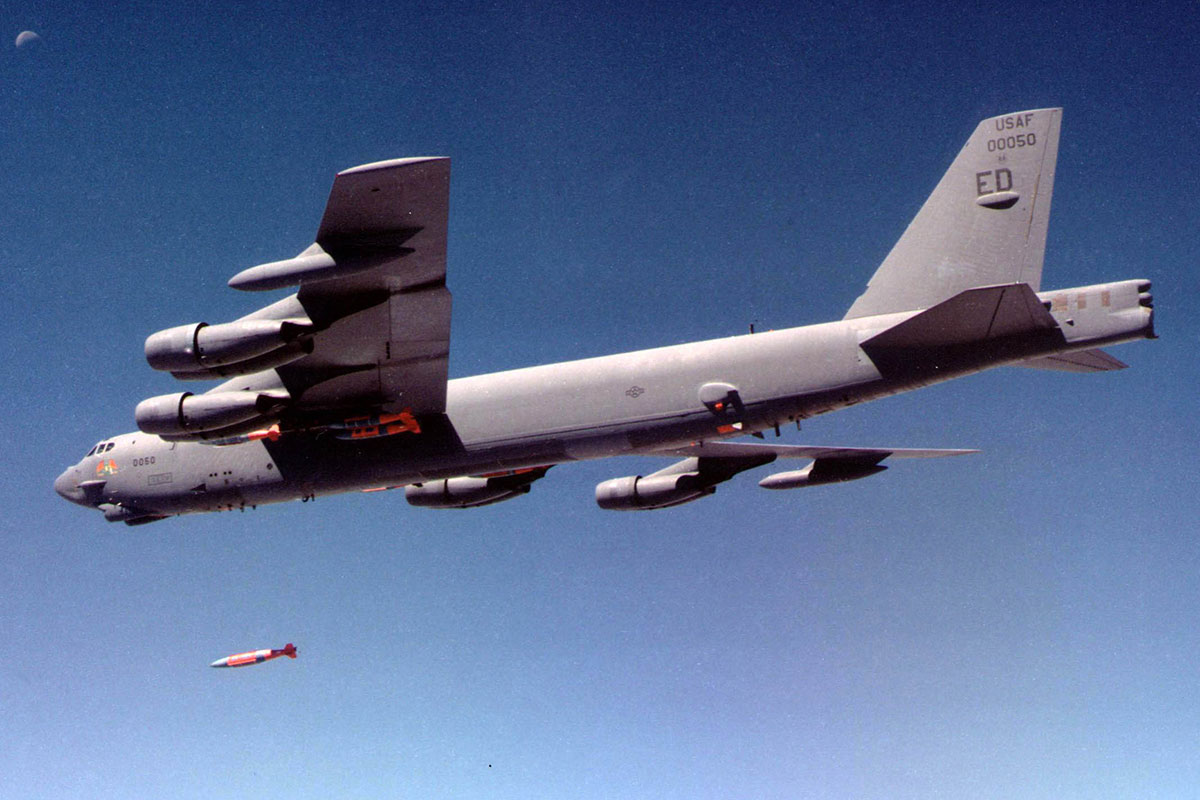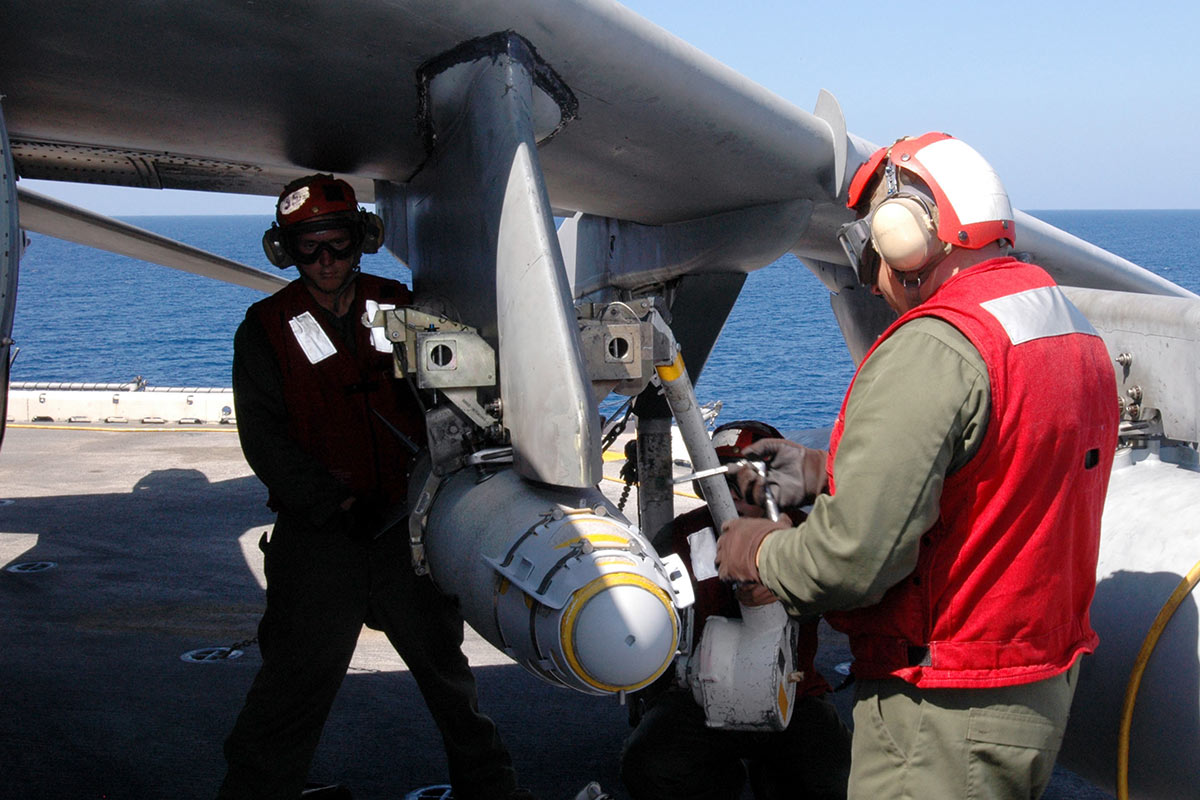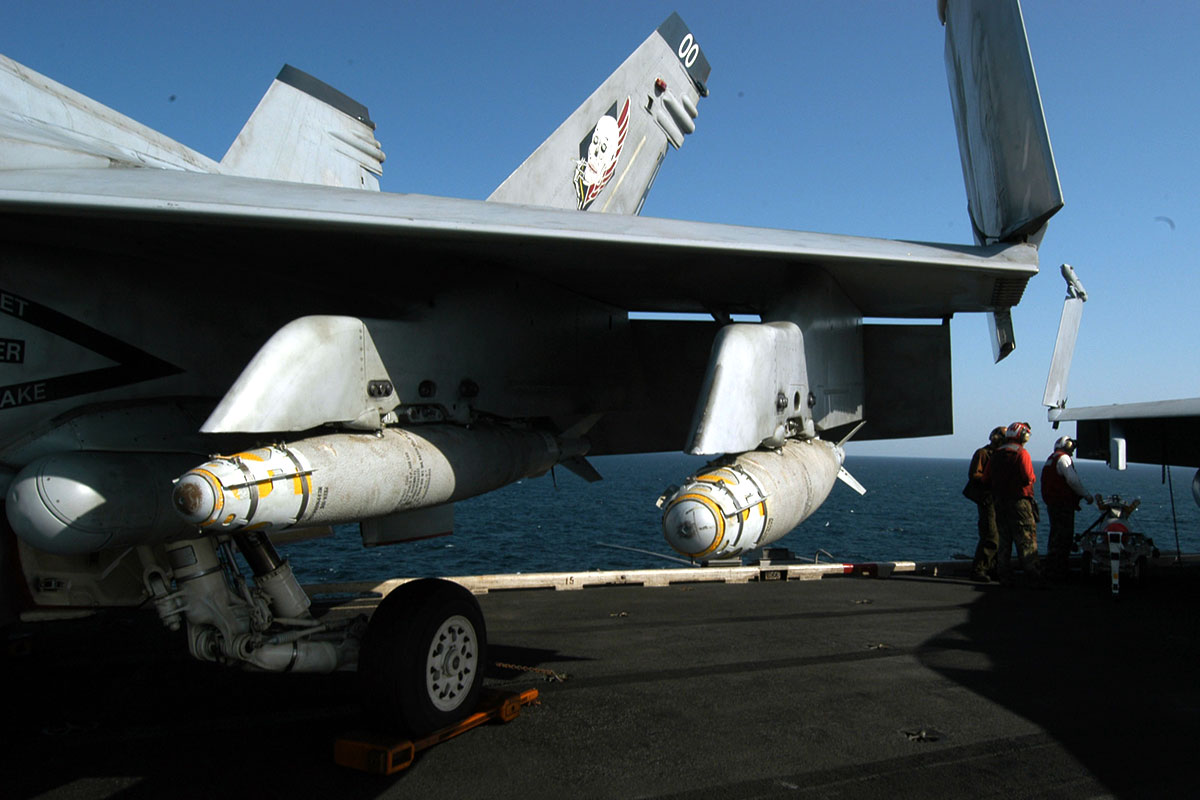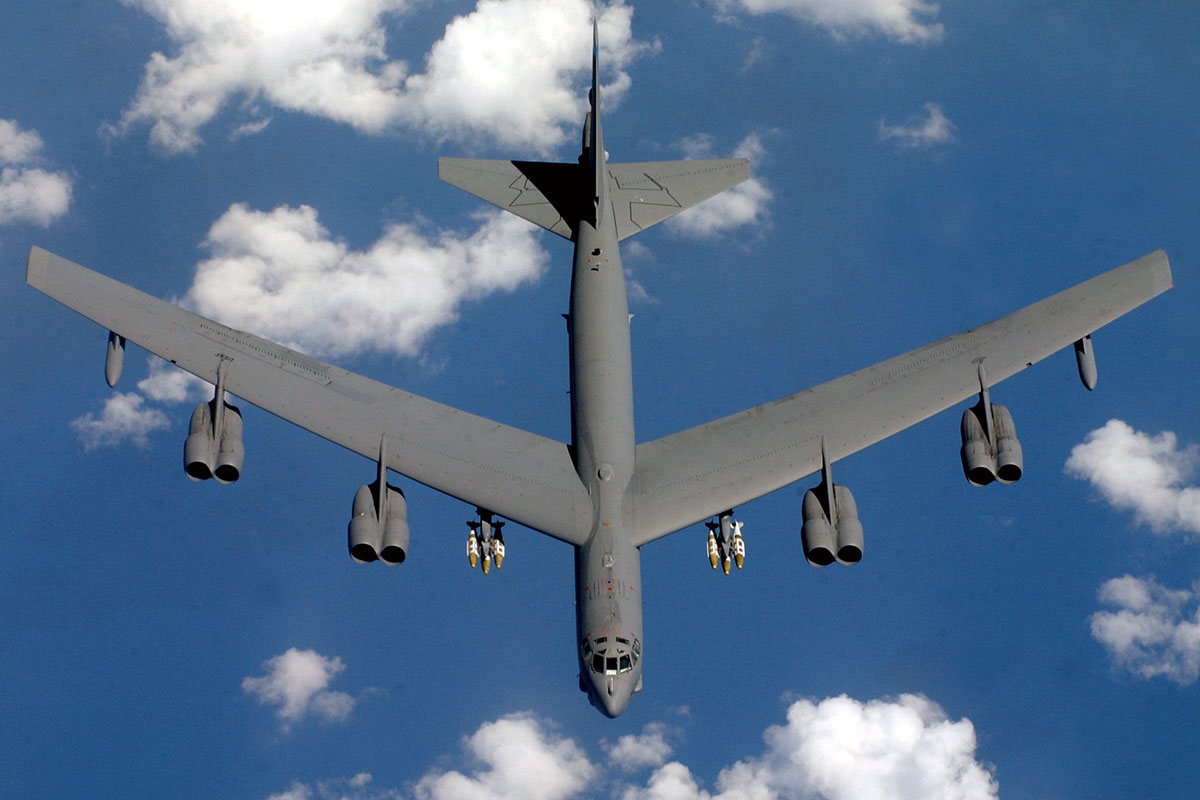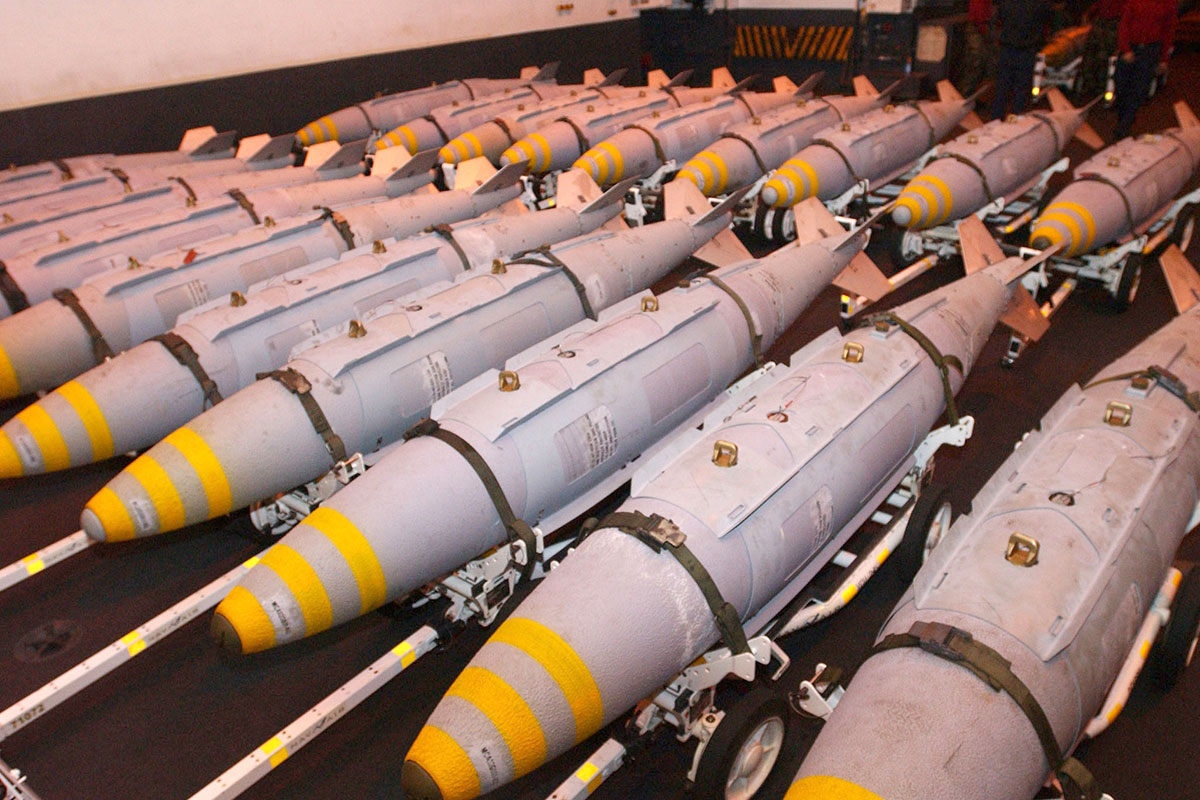Contractor: Boeing Company
Service: USN, USAF, USMC
Length: GBU-31 152.7 inches; GBU-32 119.5 inches; GBU-38 92.6 inches
Launch Weight: GBU-31 2,036 lbs; GBU-32 1,013 lbs; GBU-38 558 pounds
Wingspan: GBU-31 25 in; GBU-32 19.6 in; GBU-38 14 in
Range: Up to 15 miles
Ceiling: 45,000-plus feet
Guidance System: GPS/INS
The Joint Direct Attack Munition is a guidance tail kit that converts existing unguided free-fall bombs into accurate, adverse weather "smart" munitions. With the addition of a new tail section that contains an inertial navigational system and a global positioning system guidance control unit, JDAM improves the accuracy of unguided, general purpose bombs in any weather condition. JDAM is a joint U.S. Air Force and Department of Navy program.
JDAM is a guided air-to-surface weapon that uses either the 2,000-pound BLU-109/MK 84, the 1,000-pound BLU-110/MK 83 or the 500-pound BLU-111/MK 82 warhead as the payload. JDAM enables employment of accurate air-to-surface weapons against high priority fixed and relocatable targets from fighter and bomber aircraft. Guidance is facilitated through a tail control system and a GPS-aided INS. The navigation system is initialized by transfer alignment from the aircraft that provides position and velocity vectors from the aircraft systems.
Once released from the aircraft, the JDAM autonomously navigates to the designated target coordinates. Target coordinates can be loaded into the aircraft before takeoff, manually altered by the aircrew before weapon release, or automatically entered through target designation with onboard aircraft sensors. In its most accurate mode, the JDAM system will provide a weapon circular error probable of 5 meters or less during free flight when GPS data is available. If GPS data is denied, the JDAM will achieve a 30-meter CEP or less for free flight times up to 100 seconds with a GPS quality handoff from the aircraft.
JDAM can be launched from very low to very high altitudes in a dive, toss or loft and in straight and level flight with an on-axis or off-axis delivery. JDAM enables multiple weapons to be directed against single or multiple targets on a single pass.
JDAM is currently compatible with B-1B, B-2A, B-52H, AV-8B, F-15E, F/A-18C/D/E/F, F-16C/D and F-22 aircraft. Follow-on integration efforts are currently underway or planned to evaluate compatibility with the A-10, F-35 Joint Strike Fighter and MQ-9 Reaper unmanned aerial vehicle.
Desert Storm highlighted a shortfall in air-to-surface weapon capability. Adverse weather conditions limited employment of precision guided munitions. Unguided weapon accuracy was also degraded when delivered from medium and high altitudes. Research and development of an "adverse weather precision guided munition" began in 1992. The first JDAMs were delivered in 1997 with initial operational testing conducted in 1998 and 1999. More than 450 JDAMs were dropped during this testing, recording an unprecedented 95 percent system reliability while achieving a 9.6-meter accuracy rate. JDAM performance has been demonstrated in operationally representative tests including drops through clouds, rain and snow. These tests included a B-2 releasing 80 JDAMs on a single pass against multiple targets.
JDAM and the B-2 made their combat debuts during Operation Allied Force. The B-2s, flying 30-hour, nonstop, roundtrip flights from Whiteman Air Force Base, Mo., delivered more than 600 JDAMs during Allied Force. This combination of stealth and accuracy has revolutionized air warfare. Growth of the JDAM family of weapons expanded to the MK-82 500-pound version, which began development in late 1999. Enhancements such as improved GPS accuracy, a precision seeker for terminal guidance extended range, in-flight target updating and additional warheads are being demonstrated and tested for future consideration.
